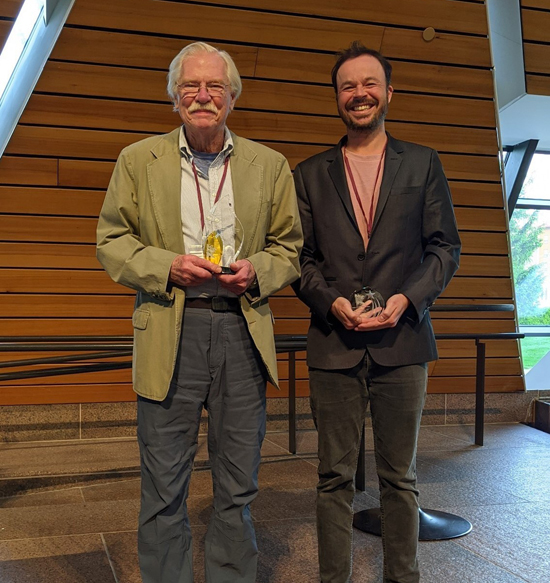
Rafael Arrojo e Drigo, PhD, assistant professor of Molecular Physiology and Biophysics and a faculty member of the Vanderbilt Diabetes Research Center, received the inaugural Robert L. Sorenson Young Investigator Award from the Midwest Islet Club (MIC) in recognition of his research excellence and innovation in the field of islet research.
Arrojo e Drigo’s research focuses on understanding the aging process of beta cells, the pancreatic islet cells that produce insulin. He and the members of his lab seek to identify what parts of these cells fail first during aging and how they fail. This knowledge could help in the development of ways to slow or possibly prevent negative age-related effects that compromise beta cell structure and function.
“We are delighted that Rafael was the recipient of the inaugural Robert L. Sorenson Young Investigator Award,” said Nancy Carrasco, Joe C. Davis Professor of Biomedical Science and chair of the Department of Molecular Physiology and Biophysics. “Rafael is an insightful and creative scientist who is determined to identify and elucidate the mechanisms underlying beta cell longevity, and to ascertain how the mechanisms responsible for long-term homeostasis in beta cells are affected in diabetes. I expect this to be the first of many distinctions awarded to Rafael.”
Arrojo e Drigo led the development of an imaging approach that combines electron microscopy and multi-isotope mass spectroscopy (MIMS-EM) allowing investigators to cross multiple scales in space and time to quantify the age of virtually any cell type.
MIMS-EM leverages the resolution power of the different types of microscopes to map the fine architecture of cells and to quantify the levels of specific stable isotope isoforms retained by cellular structures. By doing this without disrupting tissue microenvironments, the age or turnover rate of cells and structures can be determined. This work was published in the journal Cell Metabolism and has been the foundation for subsequent publications including in Science Advances.
“We have used MIMS-EM to identify long-lived beta cells, which can be as old as the organism itself and are therefore more likely to accumulate damage,” Arrojo e Drigo said. “We have also recently applied single cell transcriptomics and high-resolution microscopy to reveal that human aging beta cells have compromised expression of proteins involved in the maintenance of normal beta cell function. This includes a reduction in the capacity of aging beta cells to adapt to situations that trigger cellular stress.”
MIC meetings are held to encourage greater communication and interaction between junior and senior pancreatic islet cell biology researchers in the Midwest region. The award Arrojo e Drigo received is named in honor of Robert Sorenson, PhD, professor emeritus at the University of Minnesota. Sorenson was also honored at the MIC meeting with a lifetime achievement award for his outstanding contribution to the study of diabetes and islet biology during pregnancy.
“This is my first award, and I am extremely honored to have been selected for it,” Arrojo e Drigo said. “It has special meaning to me since Bob Sorenson was there to receive his life achievement award. Bob pioneered the application of multicolor, confocal light microscopy in the islet field, something I use daily in my work at Vanderbilt and my favorite technique to use.”
Arrojo e Drigo came to Vanderbilt University in 2020, after working as a staff scientist at the Salk Institute for Biological Studies. He also has conducted research at Nanyang Technological University Singapore, University of Miami Miller School of Medicine and Brigham and Women’s Hospital. He earned an undergraduate degree in biology at Universidade Presbiteriana Mackenzie and a doctorate in endocrinology at Universidade Federal de Sao Paulo.












